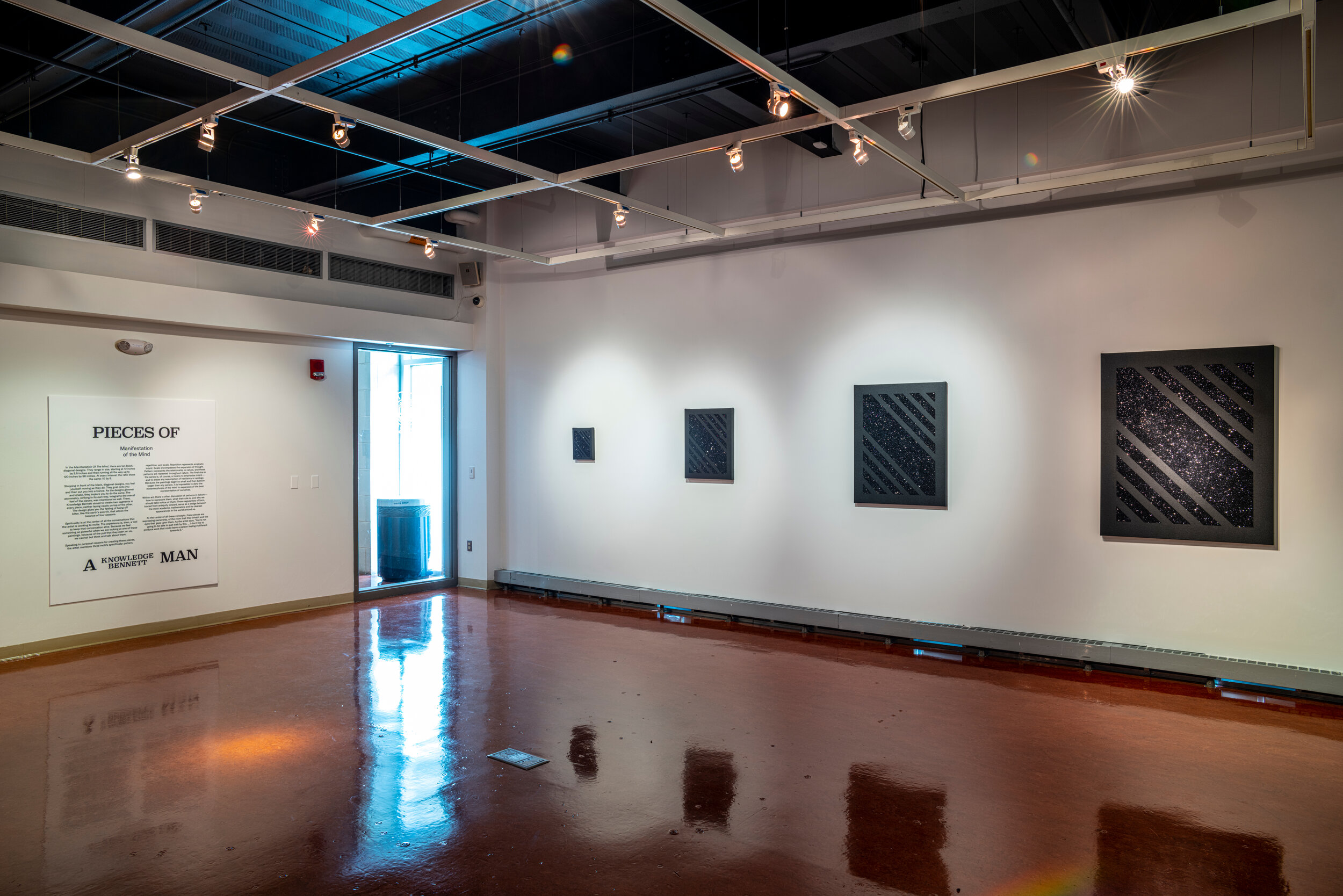Manifestation Of The Mind
In the Manifestation Of The Mind, there are ten black, diagonal designs. They range in size, starting at 12 inches by 9.6 inches and then running all the way up to 120 inches by 96 inches. At every interval, the ratio stays the same: 10 by 8.
Stepping in front of the black, diagonal designs, you feel yourself moving as they do. They grab onto you and then put you into a trance. As the designs glimmer and shake, they implore you to do the same. The asymmetry, striking in its own way, integral to the overall feel of the pieces, was intentional as well. There, Knowledge Bennett aimed to create two segments in every piece, neither laying neatly on top of the other. The design gives you the feeling of being off kilter, like the earth’s axis tilt, that allows the balance of four seasons.
Spirituality is at the center of all the conversations that the artist is working to incite. The experience is, then, a tool to keep that conversation alive. Because we feel something so powerful when we are looking at one of these paintings, because of the pull that they exert on us, we cannot but think and talk about them.
Speaking to personal reasons for creating these pieces, the artist mentions three motifs specifically: pattern, repetition, and scale. Repetition represents emphatic intent. Scale encompasses the expansion of thought. Pattern represents the relationship to nature, and these patterns are repeated throughout nature. The final size in the series is, of course, a means to emphasize intent—and to erase any assumption of hesitancy or apology. Because the paintings begin so small and then balloon larger than any person, it is impossible to deny the metamorphosis of the mind to expansion of the best representation of ourselves.
Within art, there is often discussion of patterns in nature—how to represent them, what their role is, and why we should take notice of them. These regularities of form, traced from antiquity onward, serve as a bridge between the most academic mathematics and its clearest appearances in the world around us.
At the center of all these concepts, these pieces are expressing ownership, of the room that they inhabit and the eyes that gaze upon them. As the artist says, “You're not going to be able to just walk by this. ...I don't like to produce work that could leave a person feeling indifferent towards it.”



